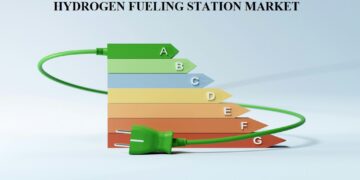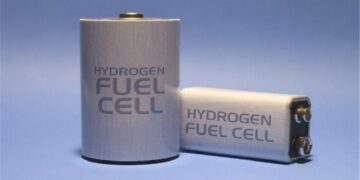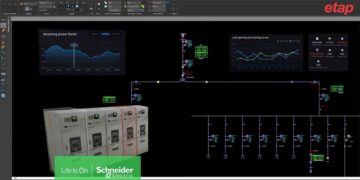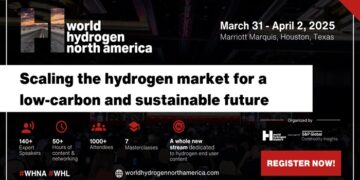The BLM’s quick and easy permitting available for solar projects in Nevada, which happens to be a red state, is driving the cost of solar power to record lows.
Warren Buffet’s utility NV Energy has signed the lowest price contract for solar ever, at just US $0.0384 for First Solar’s 100-MW Playa Solar project, beating even its own record low price of $0.046 cents for SunPower’s 100-MW project in Boulder City, Nevada.
Both solar projects benefit from new streamlined permitting set up through the Bureau of Land Management’s (BLM) Western Solar Plan, which designated 19 Solar Energy Zones (SEZ). This auction covered six parcels across 3,083 acres in Nevada. The previous case-by-case way to permit solar on BLM land was taking at least two years; and even longer if anything to tripped up the process.
These two 100-MW projects were reviewed and approved in under 10 months, a testament to its efficacy.
“Projects like these demonstrate that regional planning and mitigation can achieve much faster permitting times and better outcomes,” said BLM Director Neil Kornze.
The idea is that SEZ allow for a more efficient and predictable permitting process, by focusing development in regions with the highest resource potential and lowest conflicts. In June of 2014 BLM held an auction for projects within the Dry Lake Solar Energy Zone and received 1.3 GW of bids from solar developers, along with a few hundred megawatts of wind and geothermal bids.
“We had a lot of interest in it. We sold every single parcel,” said Greg Helseth, Renewable Energy Project Manager at NV BLM. “And it wasn’t really a sale — it was for preferred applicant status. The six parcels went for $5.8 million.”
The preferred solar applicants were then whittled down and First Solar’s Playa Solar and SunPower’s Boulder City project made the final cut. The wind and geothermal bids wound up being more expensive, and didn’t fit the utility’s load profile; generating during off-peak night-time.
SunPower’s flat price bid was actually the lower of these two bids overall, when averaged over the 25 year PPA, as First Solar’s includes an escalation clause. SunPower’s also would deliver power starting and ending later in the day, following the afternoon peak load more closely.
First Solar’s project is designed to generate just over 307,000 MWh/yr. SunPower’s would generate 289,288 MWh/yr and includes an option for NV Energy to buy the project after 6 years, at $120 million or fair market value, whichever is less. Both are expected to be online by the end of 2016, in time for the 30 percent ITC.
Pointing out that 84 percent of Nevada is federally managed and 60 percent of that is managed by the BLM, Helseth surmised, “in the future we could see even more space in Nevada being used to export energy out to California, which has a higher level of regulations and things to deal with.”
Solar’s Climate Benefit Valued
The boilerplate application includes a comparison to natural gas projects; that solar projects are preferable because they “don’t emit greenhouse gases” nor are they volatile as “the price is known through the term of the contract and is not subject to fuel risk.”
California, by contrast, buries this kind of obvious benefit of clean energy so deep within the thousands of pages of documentation demanded for clean energy approval, that this basic advantage is discounted.
But this kind of simple form approval is also more cost-effective, according to Helseth.
“It pretty much expedites the process, all of the work is done upfront and so then when they bid on a parcel; they do a simple environmental assessment, and then we go through the granting process, and then that’s pretty much it,” said Helseth. “Boots on the ground and start building the project.”
What is more remarkable is that this fast and efficient process is in the Dry Lake Valley in southern Nevada right across the border from BrightSource’s 377 MW Ivanpah solar (thermal electricity; image above courtesy Brightsource) project in the California desert, which endured an almost passive-aggressive level of permitting, according to Mike Roddy.
He blamed opposition by large-scale land interests in his investigation Solar Sabotage in the Mojave Desert.
“There’s three million acres in the California desert set aside for off-road vehicles, but no one seems to have a problem with that,” he said. “More land than we’re ever going to use for solar, and nobody brought this up at any of the meetings I went to.”
Roddy, who lives in Yucca Tree, attended a lot of the meetings during the permitting for Ivanpah and other large-scale desert solar in California, and experienced the dishonest representation of environmental risk by opponents.
“They would get up at these meetings and say this is important golden eagle habitat, or that they hike there,” he said.
“I’m an old desert guy, and I know nobody hikes out there, you can die. Eagles can’t nest on flat wilderness. This was a particularly barren region, mostly creosote; an invasive species from Argentina that kills everything around it. It even kills its own young. To say that was golden eagle habitat was typical of the kind of dishonesty going on among these opponents.”
They displayed photos of different areas at the meetings to make it look as if valuable hiking destinations would be impacted. Roddy saw how California regulators were intimidated.
“I would speak to the BLM guys privately after the meetings and they were overwhelmed by what they perceived to be public opinion,” he said. “People in government are political and when they can sense that powerful forces are going to very determined about opposing them; they tend to follow the path of least resistance.”





































